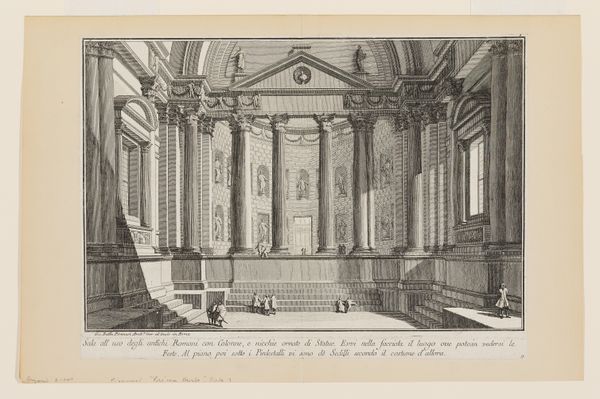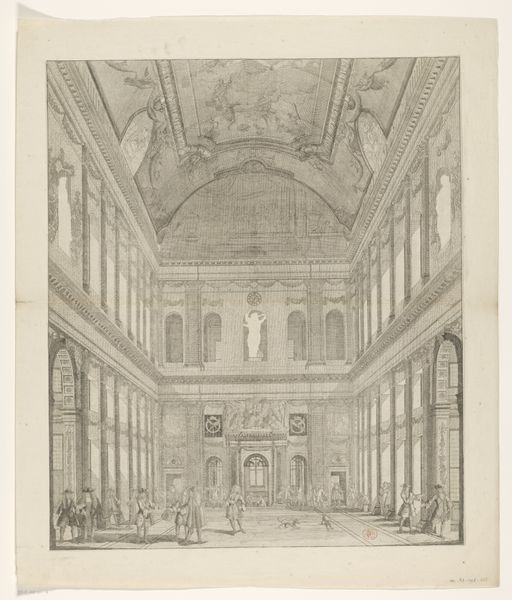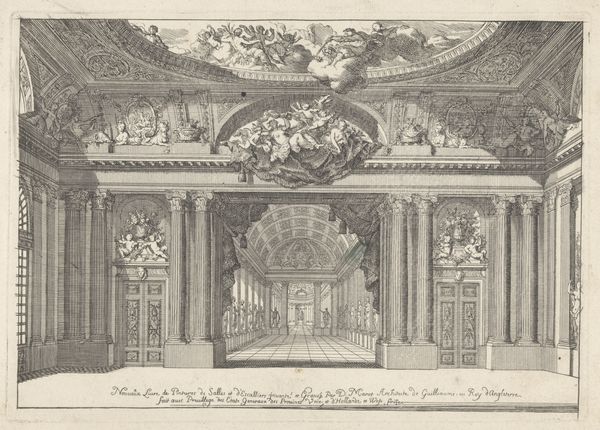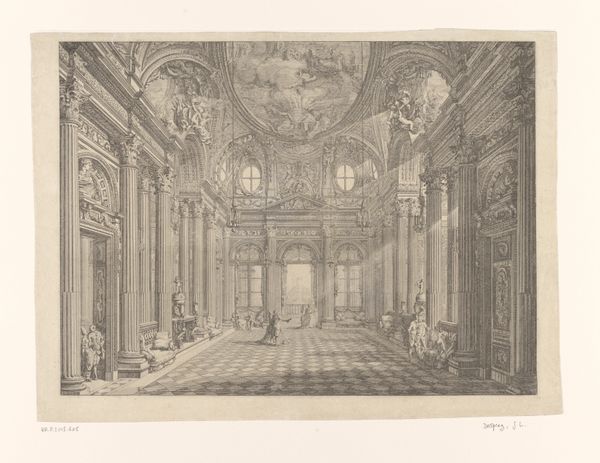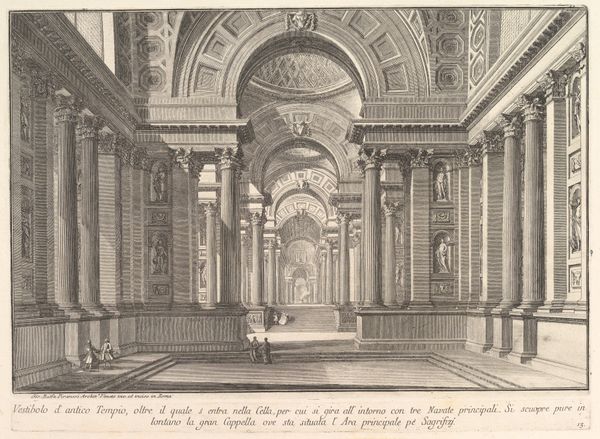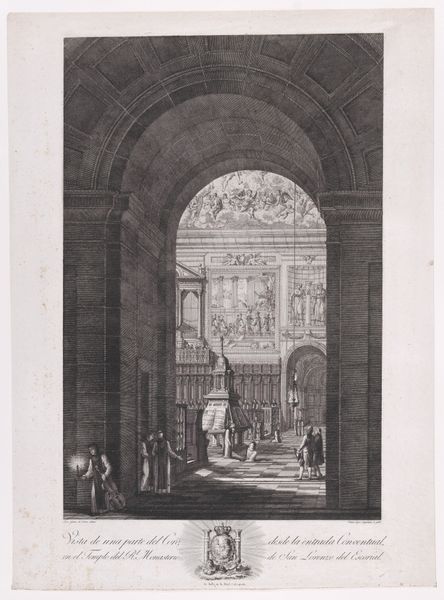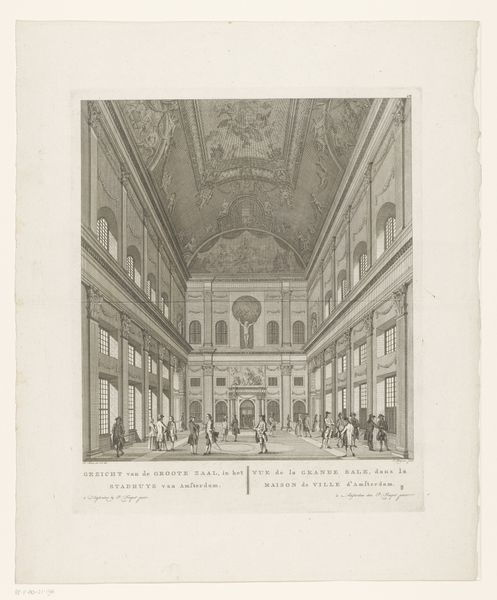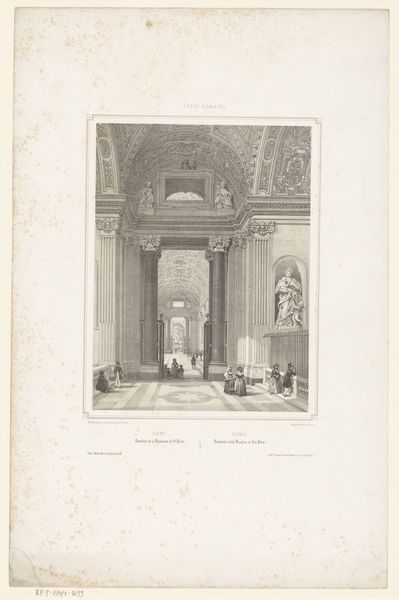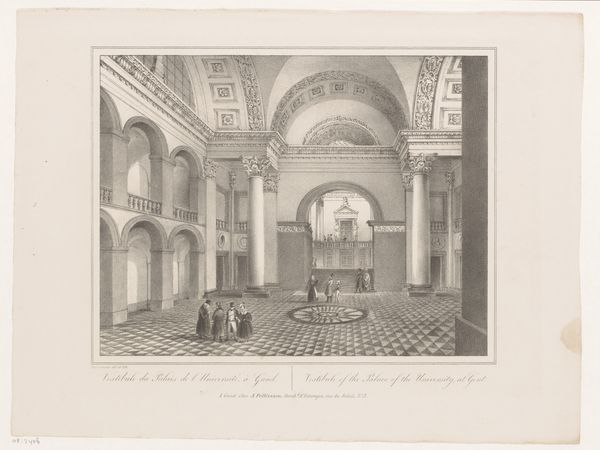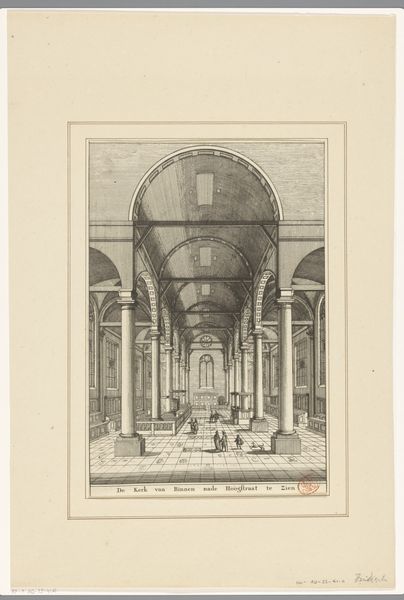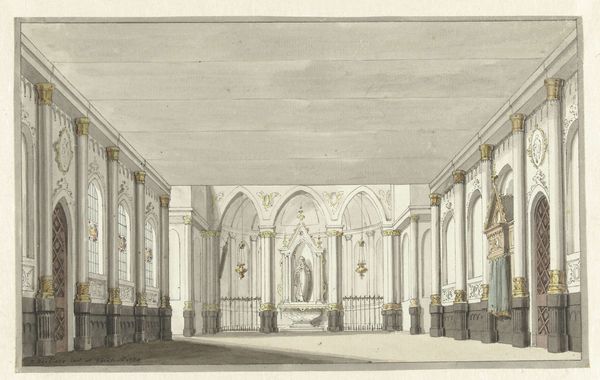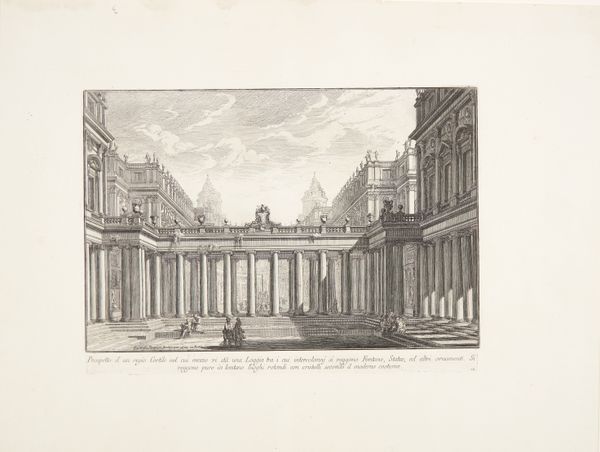
Colonnaded hall according to the custom of the ancient Romans, and niches adorned with statues 1743
0:00
0:00
Dimensions: 246 mm (height) x 370 mm (width) (plademaal), 246 mm (height) x 370 mm (width) (billedmaal)
Giovanni Battista Piranesi made this print of a colonnaded hall in the style of ancient Rome. It presents an idealised vision of Roman architecture and a social space, reflecting the 18th-century fascination with classical antiquity. The image is a study in architectural grandeur and the theatrical use of space. Piranesi uses visual codes of the classical world, such as the symmetrical arrangement of columns and statues to evoke a sense of historical authority. This print was made in Italy, a cultural centre that shaped European tastes. It served an educational role, allowing architects and patrons to study and emulate classical forms. Piranesi’s work speaks to the social structures of his time, where knowledge of classical antiquity was a marker of education and social status. It offers a progressive vision by making the classical world accessible to a broader audience through printed images. Understanding Piranesi's print requires research into the history of classical scholarship, the Grand Tour, and the development of architectural education in the 18th century. The meaning of art is contingent on its social and institutional context.
Comments
No comments
Be the first to comment and join the conversation on the ultimate creative platform.

